Biodiversity and Natural Capital Risk assessment
Biodiversity and Natural Capital Risk assessment
As an industry with a high dependency and impact on natural capital, Pulmuone recognizes the importance of natural capital and biodiversity. In order to manage and conserve natural capital and biodiversity risks, we have conducted risk assessments based on the TNFD framework using the WWF Risk Filter Tool. The Risk Filter Tool is based on the LEAP methodology. Biodiversity-related risks are regularly discussed at the Session D meeting, where the CEO and executive management review the biodiversity plan and strategies, roles and responsibilities for biodiversity activities, management strategies and risk management. Biodiversity risks are integrated into the company-wide ESG risk management system. Going forward, we plan to enhance our natural capital and biodiversity risk assessment and response.
[Risk assessment process]

1. Number of Sites by Country
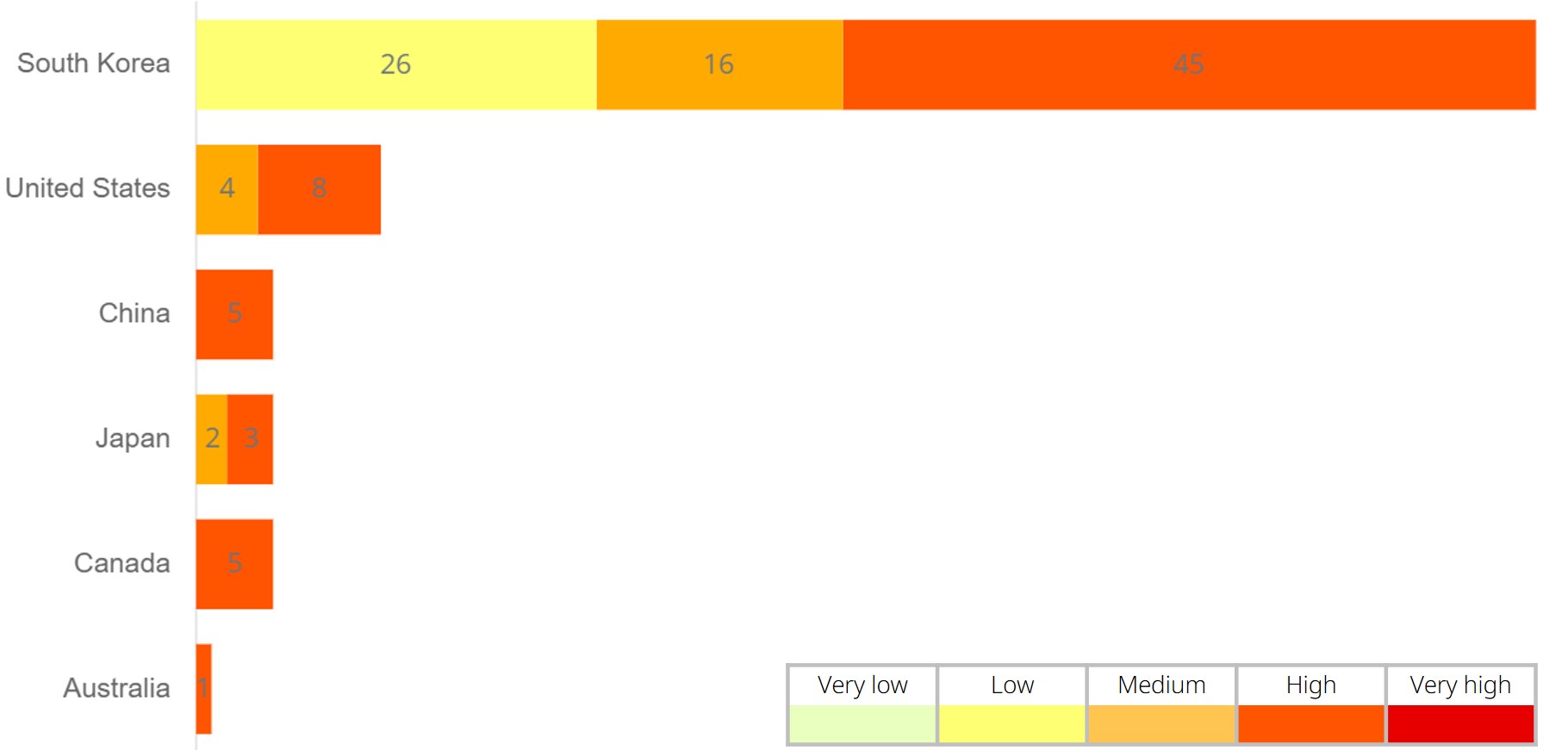
Pulmuone used the WWF Biodiversity Risk Filter Tool to assess risks related to natural capital and biodiversity for a total of 114 including our own and partner company facilities. The WWF Risk Filter is based on the LEAP assessment methodology of the TNFD and evaluates risks based on latitude, longitude, and relevant regions or watersheds using a location-specific approach. According to the risk assessment results from the WWF Risk Filter, high levels of risk (scoring 3.4 or higher) were most prevalent in Korea. Out of the 114 worksites assessed, there were 16 worksites where both scape physical risks and scape reputational risks were identified as high. However, no facilities were specifically identified as having extremely high reputational risks. The facilities with high physical risks were identified as the Cheongju facility and the Korea Packaging facility. The analysis of physical risks includes the assessment of our own facilities, upstream (source of raw materials and initial processing partner companies), and downstream (concession facilities, distribution center) to cover the entire value chain.
2. Number of Sites by Risk Type
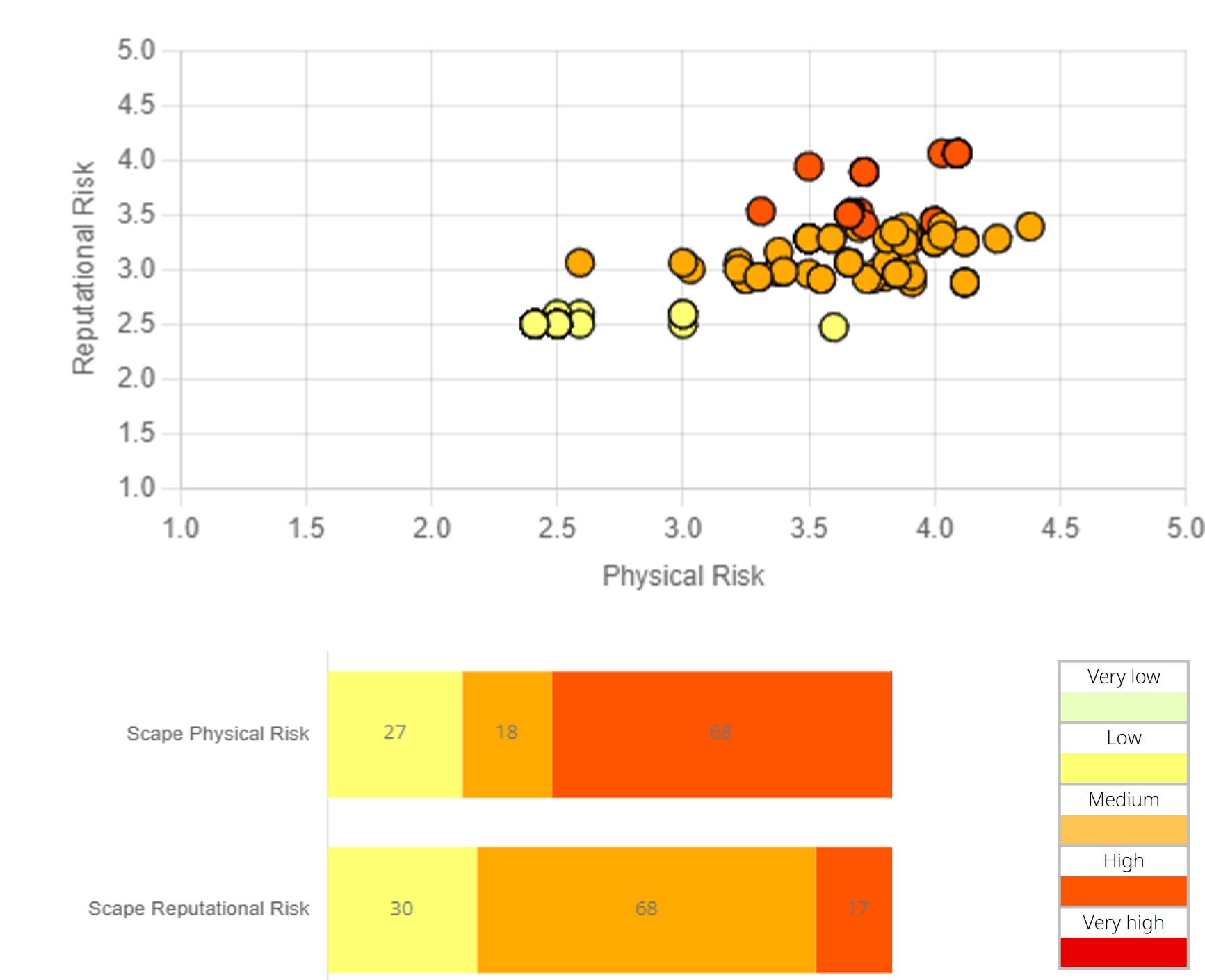
[WWF Biodiversity risk assessment results (high-risk* worksites)]
*High Risk, Very High Risk
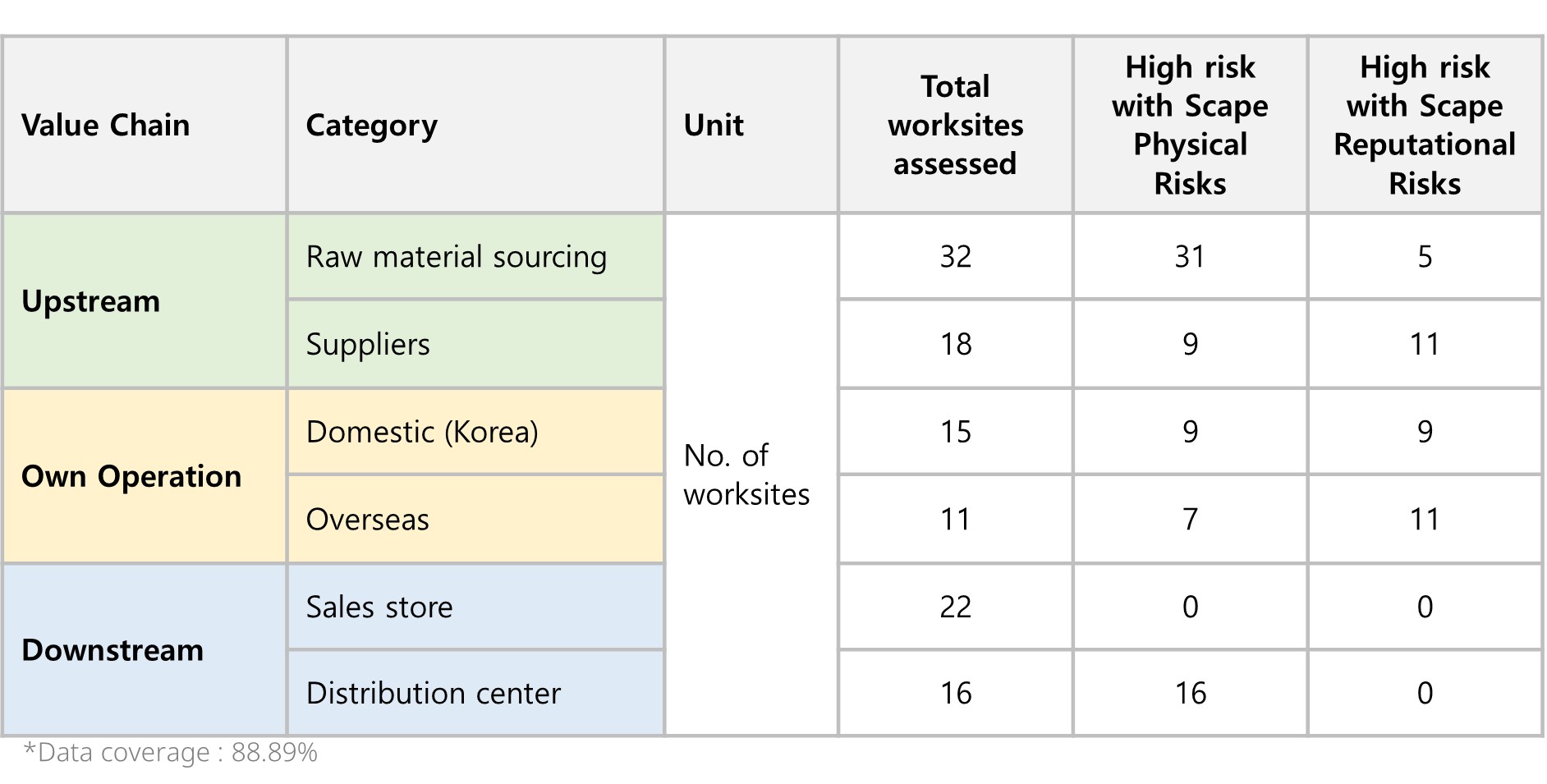
3. WWF Biodiversity Risk Filter levels
Scape Physical risks are evaluated by considering the following specific types:
(1) Provisioning Services, (2) Regulatory and support services – Enabling, (3) Regulatory services – Mitigating, (4) Cultural services, (5) Pressure on biodiversity
Scape Reputational risks are evaluated by considering the following factors:
(6) Environmental factors (7) Socioeconomic factors, (8) Additional reputation factors
These categories assess the overall dependency and impact on natural capital. For example, service provisioning (1) evaluates the dependency on biodiversity, such as water scarcity and distance to forest productivity and markets. Environmental risk factors (6) assess the impact on protected and conservation areas and key biodiversity areas.
Environmental Reputation Risk considers the following factors: 1) Protected and Conserved Areas, 2) Key Biodiversity Areas, etc. (Source : WWF)
1) Protected and Conserved Areas : This indicator is based on overlap of the assessment units with protected areas (PA). A high risk score for this indicator is a result of high impact of your industry on PAs in combination with high location risk scores. Assessment units with very high risk have >30% overlap with PA Categories I-IV + not categorized PA’s.
2) Key Biodiversity Areas: UNEP-WCMC’s World Database of Protected Areas (WDPA) (UNEP-WCMC and IUCN 2021a) was used. A high-risk score for this indicator is a result of high impact of your industry on KBAs in combination with high location risk scores. Assessment units with very high risk have >50% overlap with a KBA.
Pulmuone assessed biodiversity impct and risks through an in-depth analysis of environmental factors. A total of 21 locations have been identified as having high biodiversity risks.
[Protected and Conserved Areas / Key Biodiversity Areas risk assessment results (high-risk* worksites)]
*High Risk, Very High Risk
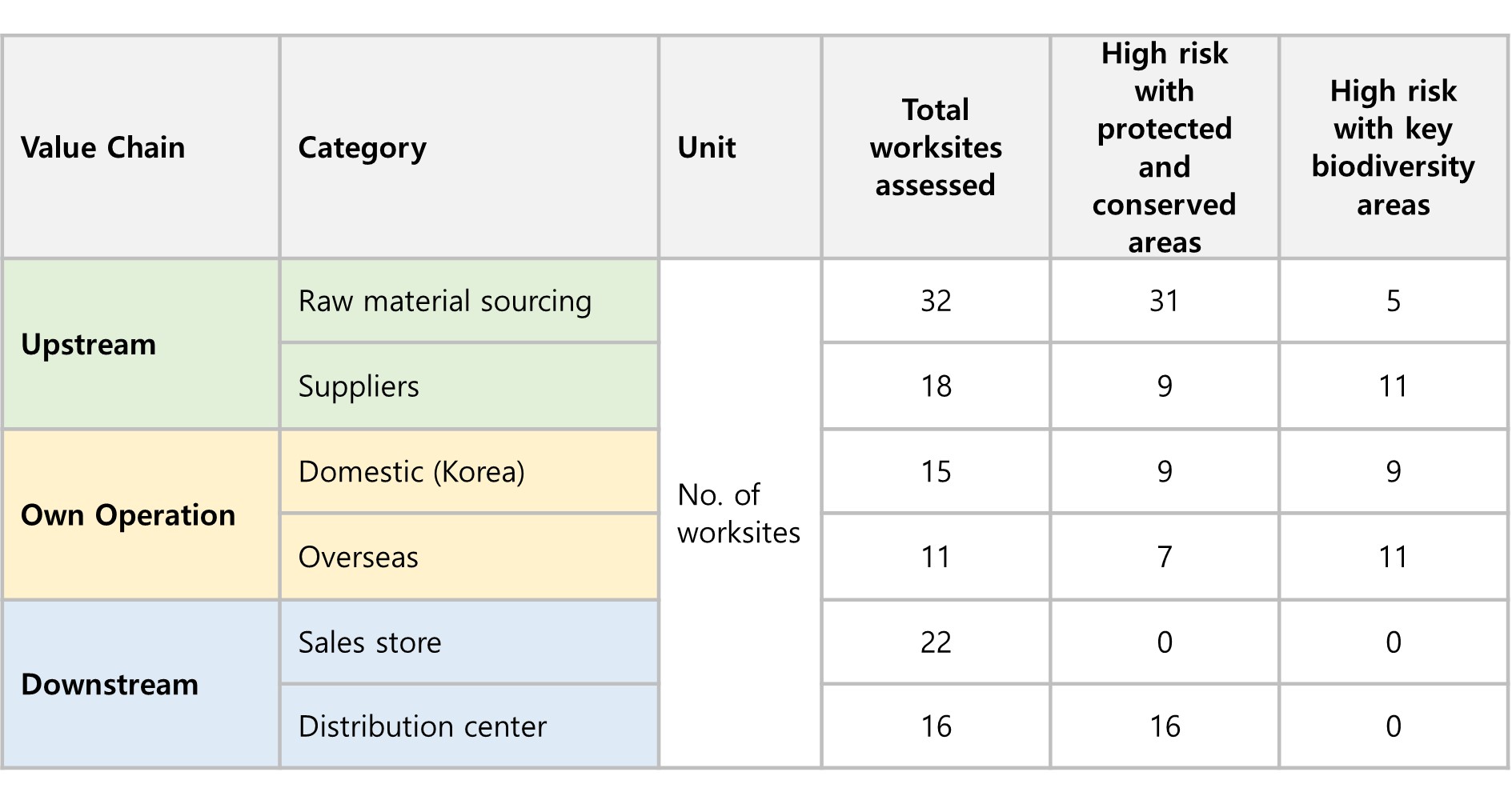
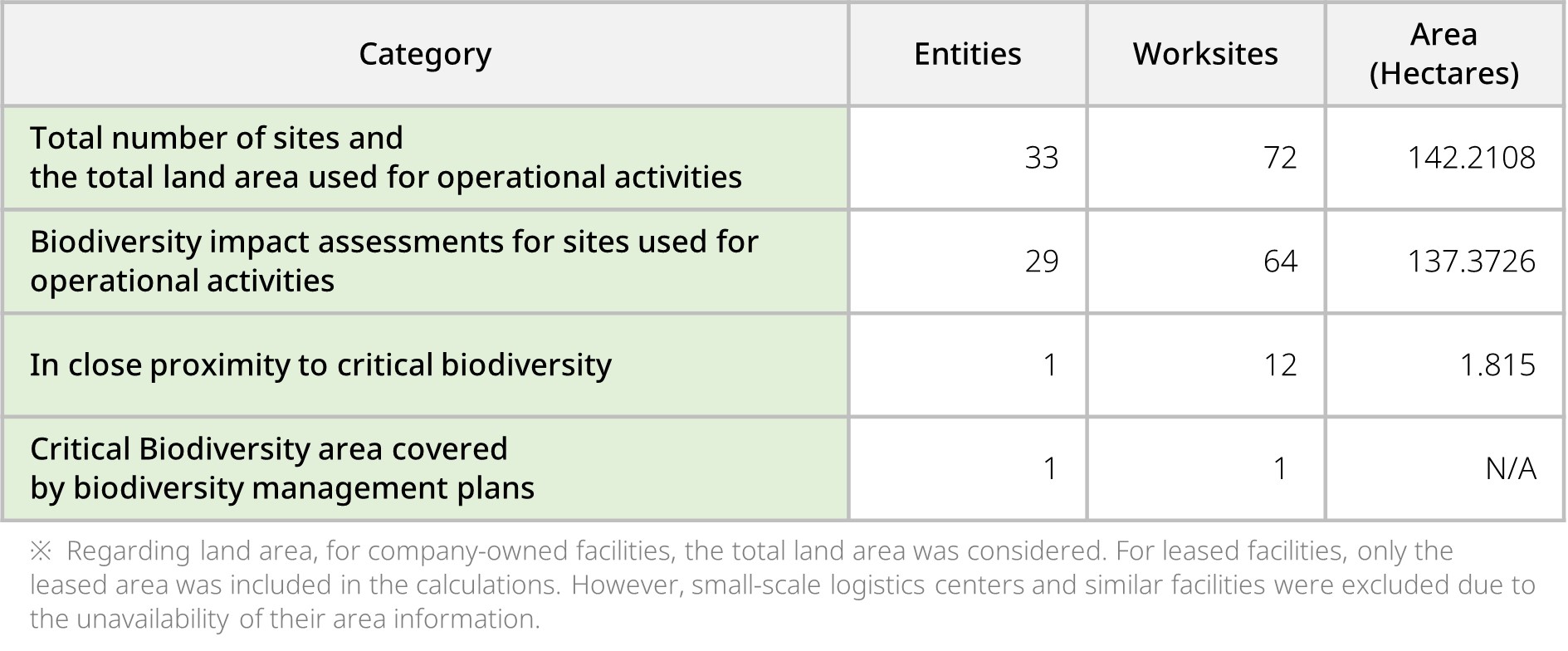
Restore : Odaecheon Ecosystem Restoration Project
Pulmuone has been promoting endangered wildlife (tropical fish) breeding and restoration projects with related organizations near the Chuncheon Tofu Factory. In 2013, we started the Odaesan Gajanigol Tropical Fish Restoration Project and have continued the restoration project to date. Chuncheon Tofu Factory is one of the areas identified as having high biodiversity risk. In 2023, we signed MOU to participate in the endangered species "Odaecheon Tropical Fish Propagation Restoration Project" in Pyeongchang, Gangwon-do, as part of the local ecosystem conservation activities. We aim to contribute to the restoration of existing fish habitats and the restoration of aquatic ecosystems in abandoned mining areas through activities such as investigating food density and habitat conditions, radiating native species through trout production, removing dams within rivers (to ensure continuity), increasing canopy coverage (to reduce water temperature), and creating small ponds for fish habitat improvement.

Reduce : Reducing marine biodiversity impacts through the use of MSC certification
Pulmuone is committed to creating wholesome foods for the people and the planet. Based on our corporate spirit, “Love for Our Neighbors, Respect for Life,” we are developing wholesome foods,
going beyond the standards for safe and trusted food to offer sustainable food that is good for our bodies and the environment. The goal is to to increase the use of certified (MSC/ASC, etc.) We are expanding our MSC/ASC certified products, including 'Noonil Seaweed'. MSC/ASC certification can only be earned by seafood ingredients that have passed rigorous audits on sustainable marine ecosystems. Pulmuone is minimizing its impact on the marine ecosystem by establishing an analysis and manual on endangered marine life that can be found near Buanan, Jeollabuk-do, where the original fish farm for 'Noulhae Shim' is located. ( 4.16% of MSC certified seaweed purchased in 2022)









